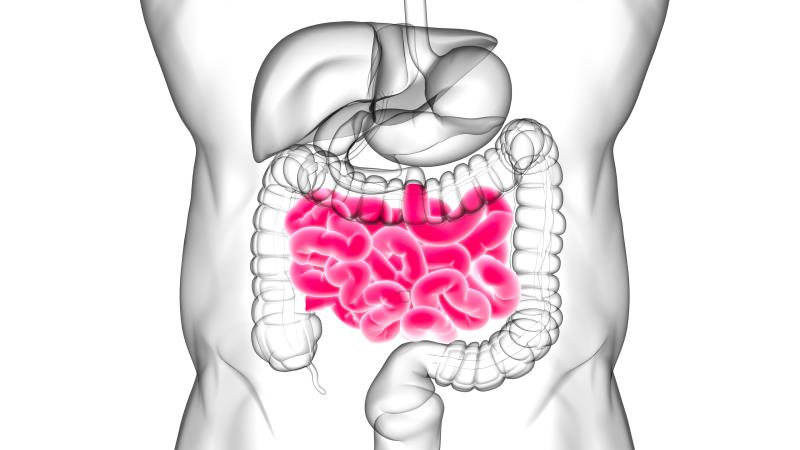Background
Small-intestinal angiodysplasia (SIA), characterized by ectatic vessels, contributes to recurrent gastrointestinal (GI) bleeding and anemia, posing therapeutic challenges. Thalidomide’s potential in treating angiodysplasia-related GI bleeding prompted this study.
Summary
This multicenter trial (April 2016 – December 2020) enrolled 150 patients (≥50 years) with confirmed SIA and ≥4 bleeding episodes in the past year. They were randomized into 100-mg thalidomide (n=51), 50-mg thalidomide (n=49), or placebo (n=50).

Primary Endpoints
Effective response rates:
- 100-mg thalidomide: 68.6%
- 50-mg thalidomide: 51.0%
- Placebo: 16.0%
- Percent Reduction: 100-mg vs. Placebo: 52.6%, 50-mg vs. Placebo: 68.8%
- Post hoc sensitivity analysis supported primary endpoint results.
Post Hoc Analysis: This means the analysis was not planned in advance but was conducted after observing the results. While post hoc analyses can provide valuable insights, they should be interpreted cautiously. They are exploratory and hypothesis-generating rather than confirmatory.

Secondary Endpoints
- Cessation of bleeding without rebleeding:
- 100-mg thalidomide: 51.0%
- 50-mg thalidomide: 32.7%
- Placebo: 4.0%
- Percent Reduction: 100-mg vs. Placebo: 92.5%, 50-mg vs. Placebo: 87.8%
- Blood transfusion:
- 100-mg thalidomide: 17.6%
- 50-mg thalidomide: 24.5%
- Placebo: 62.0%
- Percent Reduction: 100-mg vs. Placebo: 71.6%, 50-mg vs. Placebo: 60.4%
- Hospitalization due to bleeding:
- 100-mg thalidomide: 27.5%
- 50-mg thalidomide: 34.7%
- Placebo: 74.0%
- Percent Reduction: 100-mg vs. Placebo: 62.8%, 50-mg vs. Placebo: 53.1%
Statistical Analysis
- Fisher’s exact test revealed a significant difference in effective response rates across groups (p<0.001).
Fisher’s Exact Test is a statistical tool that helps assess whether there’s a nonrandom connection between two categorical variables. In our study, it determined if there was a significant difference in the primary endpoint (effective response) across the thalidomide and placebo groups.
- Thalidomide (100 mg and 50 mg) demonstrated superiority over placebo.
- Percent Reductions for thalidomide vs. placebo in secondary endpoints:
- Cessation of bleeding: 100-mg: 94.4%, 50-mg: 87.6%
- Blood transfusion: 100-mg: 71.7%, 50-mg: 60.5%
- Hospitalization: 100-mg: 62.2%, 50-mg: 53.5%
Adverse Events
- Adverse events occurred in 68.6% (100-mg), 55.1% (50-mg), and 28.0% (placebo).
- Common events included constipation, somnolence, peripheral edema, elevated liver-enzyme levels, and dizziness.
- No serious adverse events reported.

Conclusion
Thalidomide, at 100 mg and 50 mg doses, effectively reduced recurrent GI bleeding from SIA, showing a favorable safety profile. Further investigations are warranted to explore treatment duration and potential long-term benefits in diverse populations.
Limitations
- Small Sample Size:
- The trial’s relatively small sample size, with 150 patients, might limit the generalizability of the findings to a broader population. This is especially relevant when considering the diversity of patients with gastrointestinal conditions.
- Exclusively Chinese Population:
- The study was conducted exclusively in China, primarily involving Han Chinese participants. This lack of diversity in the study population raises questions about the external validity of the results to more ethnically diverse populations.
- Duration of Thalidomide Treatment:
- The trial’s choice of a 4-month treatment duration for thalidomide was based on historical studies. The optimal duration for thalidomide’s efficacy in recurrent gastrointestinal bleeding remains uncertain, and longer-term effects were not extensively explored in this study.
The full Research paper can be found on NEJM.
Reference:
Chen, H., Wu, S., Tang, M., Zhao, R., Zhang, Q., Dai, Z., et al. (2023). Thalidomide for recurrent bleeding due to small-intestinal angiodysplasia. The New England Journal of Medicine, 389(18), 1649-1659. https://doi.org/10.1056/NEJMoa2303706


Leave a Reply